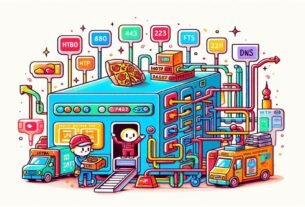Sweetheart, algorithms are the hidden heroes of our lives. But most of the time, they seem complex and confusing. Let’s explain them using pizza, love, and everyday life metaphors, so we can both have fun and learn 😏.
🧩 What is an Algorithm? Technical and Everyday Definition
An algorithm is a step-by-step set of instructions designed to solve a problem.
In the computer world, algorithms process data, make decisions, and produce results. In everyday life, it’s like this:
Algorithm example with pizza:
- Check the menu.
- Choose your favorite pizza.
- Place the order.
- Wait and eat 😋.
Simple, right? Computers work the same way, processing data step by step to reach the correct outcome.
⏱️ Time Complexity and Performance
In computer science, time complexity determines how long an algorithm takes to run.
- O(1) – Constant time:
Ordering a pizza; the steps are fixed and fast. - O(n) – Linear time:
Checking each item on the menu one by one; the more items, the longer it takes. - O(n²) – Quadratic time:
Complex matching algorithms, like choosing a partner; each candidate is compared against every criterion 😅. - O(log n) – Logarithmic time:
Binary search; splitting the menu in half to find your pizza faster.
So, in real life: small pizza orders are fast, choosing a partner is slow and complicated 😂.
🥳 Types of Algorithms and Everyday Life Metaphors
1. Sorting Algorithms
- Purpose: Organize data in a specific order.
- Example: Arrange pizza toppings alphabetically.
- Popular methods: Bubble sort, Merge sort, Quick sort.
- Life equivalent: Sorting recipes, to-do lists, or friend lists.
2. Searching Algorithms
- Purpose: Quickly find a specific item.
- Example: Find pepperoni pizza on the menu.
- Linear search: Check one by one (slow but simple).
- Binary search: Divide the menu in half to find it faster (requires a sorted list).
3. Decision-Making Algorithms
- Purpose: Choose based on conditions.
- Example: Pizza or hamburger?
- Code example:
if hunger == "high":
order = "pizza"
else:
order = "hamburger"
- Life equivalent: Daily decisions, shopping, or deciding which project to prioritize.
4. Loops and Iteration
- Purpose: Repeat the same process multiple times.
- Example: Evaluate all pizzas on the menu one by one.
- Nested loops: Check multiple criteria simultaneously → complexity increases.
💖 Algorithms and Love
Algorithms in love work similarly:
- Linear Approach: Meet people one by one and decide.
- Divide & Conquer: Meet groups and choose the best match.
- Heuristic Algorithms: Trial and error for quick results, but with a higher chance of mistakes 😅.
Note: Human factors differ from algorithms; randomness is always present.
📊 Algorithm Analysis – Example Scenario
Scenario: Find your favorite pizza among 100 options
- Linear search: max 100 steps → O(n)
- Binary search (alphabetically sorted): max 7 steps → O(log n)
- Nested criteria: Ingredients, price, size → O(n²)
Tip: Organize your data and criteria in advance 🧠 to make life easier.
🔧 Impact of Algorithms on Everyday Life
- Save time: Fast searching and sorting simplifies tasks.
- Reduce errors: Logical steps minimize mistakes.
- Stay organized: Loops and decision structures make life systematic.
🎯 Conclusion: Algorithms + Life = Win
Sweetheart 💖, algorithms aren’t just for computers—they’re life guides too.
- Ordering pizza is quick.
- Choosing a partner is complex.
- But apply the right algorithm, and both your pizza and your love life flow smoothly 😎💻🍕.
Tip: Whether coding, making decisions, or even in love:
- Steps should be logical
- Priorities should be clear
- Errors should be controlled
…and life will run like an algorithm, and you’ll be happy! 🥳




